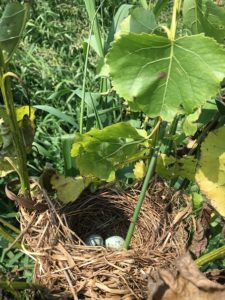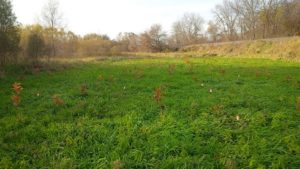Guild Forestry in the Lake States

Written by Michael Lynch
The Guild’s vision is ecologically, economically, and socially responsible forestry as the standard for professional forest management from coast to coast. That can look different from place to place. In the Lake States several members are interested in diving into the topic of what ‘Restoration Forestry’ is and what it looks like the context of our forested ecosystems. What does the term Restoration Forestry mean?
Are we striving to restore processes? Composition? Function? How do we define restoration in the face of a changing climate? Or when other resources or values come into play? What about scale?
Restoration Forestry Guild Gathering
These questions, and many more, have bounced around our conversations for several years. We have scheduled a gathering in La Crosse, Wisconsin this September to delve deeper into the topic.
In a timely coincidence, long-time Guild member Peter Bundy has a book due out this fall titled “An Active Hand: The Fundamentals of Restoration Forestry.” The book is a peer reviewed publication that covers the principles of ecology, economics, and community in successful restoration efforts and shares stories from the field to illustrate each of these topics. It should be a wonderful literary addition to the field, and we are thrilled that Peter has volunteered to serve a keynote role at the La Crosse meeting.
 We choose La Crosse, Wisconsin because the challenges of defining restoration and success are particularly complicated in the bottomland hardwoods of the Upper Mississippi. Andy Meier, Guild member and forester for the US Army Corps of Engineers in La Crescent, Minnesota, has been the driving force behind the upcoming meeting and makes a strong case for having the Upper Mississippi as the backdrop. Andy has worked in several different ecosystems but describes the Upper Mississippi as one of the most complicated due to the interplay of commercial, recreational, and ecological priorities. The dynamics of a lock-and-dam system, a sea of invasive reed canary grass, and a litany of other factors mean that without intensive action they are having trouble getting any trees to regenerate. How do we practice forestry in this setting? How do we define restoration when we are working in a system that has seen such dramatic hydrologic and invasive species changes? How do we practice forestry in an area that is vitally important for so many interests? For example, this is one of the most important transportation systems in the country. Barges head up and down the river with goods going two and from ports throughout the world. It is also extremely important for wildlife. The forest habitat along the river is one of North American’s largest, most critical migration highways.
We choose La Crosse, Wisconsin because the challenges of defining restoration and success are particularly complicated in the bottomland hardwoods of the Upper Mississippi. Andy Meier, Guild member and forester for the US Army Corps of Engineers in La Crescent, Minnesota, has been the driving force behind the upcoming meeting and makes a strong case for having the Upper Mississippi as the backdrop. Andy has worked in several different ecosystems but describes the Upper Mississippi as one of the most complicated due to the interplay of commercial, recreational, and ecological priorities. The dynamics of a lock-and-dam system, a sea of invasive reed canary grass, and a litany of other factors mean that without intensive action they are having trouble getting any trees to regenerate. How do we practice forestry in this setting? How do we define restoration when we are working in a system that has seen such dramatic hydrologic and invasive species changes? How do we practice forestry in an area that is vitally important for so many interests? For example, this is one of the most important transportation systems in the country. Barges head up and down the river with goods going two and from ports throughout the world. It is also extremely important for wildlife. The forest habitat along the river is one of North American’s largest, most critical migration highways.
This is just a snapshot of forestry issues in in the Lake States and one meeting we are coordinating to bring heads together to discuss solutions. We hope you can join us. Register here!
 Creative Silviculture Guild Gathering
Creative Silviculture Guild Gathering
Guild members will also be gathering at the University of Wisconsin’s Kemp Natural Resources Station in a few weeks to discuss a variety of hot topics in silviculture. The decision to cut or not cut an individual tree is a diametric choice, but at the stand or landscape scale, nearly all decisions facing a forest manager exist on a continuum with a range of options and often unknown outcomes. This is where a forest manager must blend what we call the art and science of growing healthy forests. The early-August Guild Gathering at Kemp Station will be an opportunity to discuss some of the creative ways people are approaching these issues to improve the stewardship of our forests. The presentations will help develop the science side of things and the conversations with other practitioners will inform the art.
More information on these meetings can be found on our events page. Please reach out to us at membership@forestguild.org if you have any questions about these events or have topic or location ideas for future Guild Gatherings. Member feedback is how we develop gatherings and any ideas or feedback you can provide are very useful!
